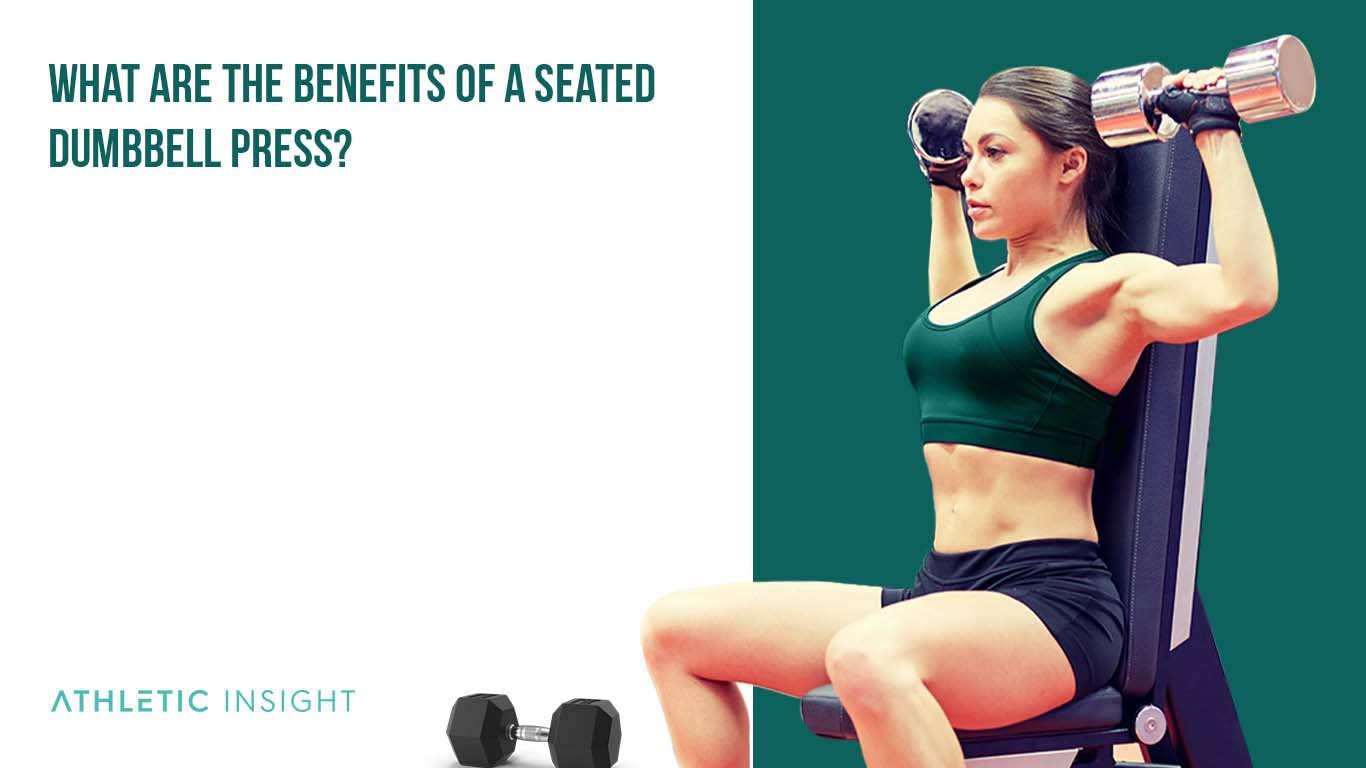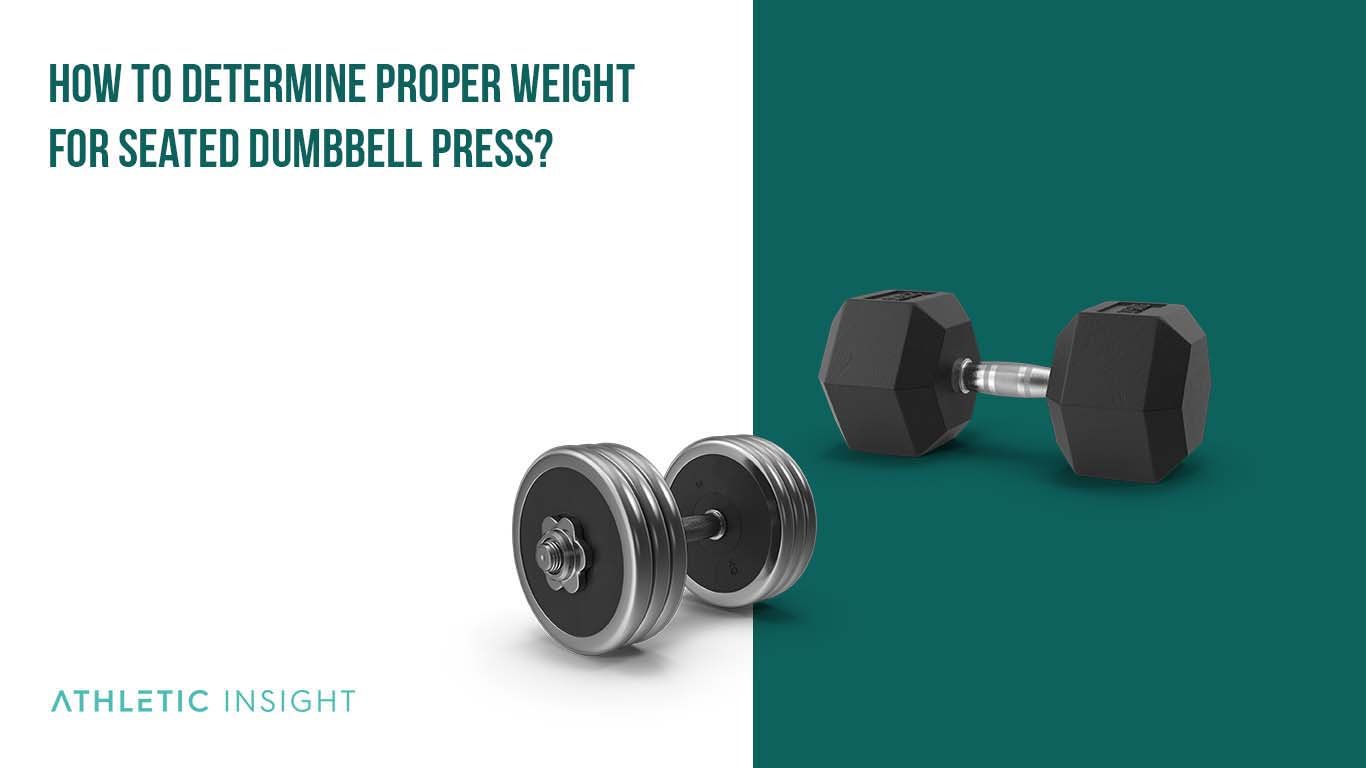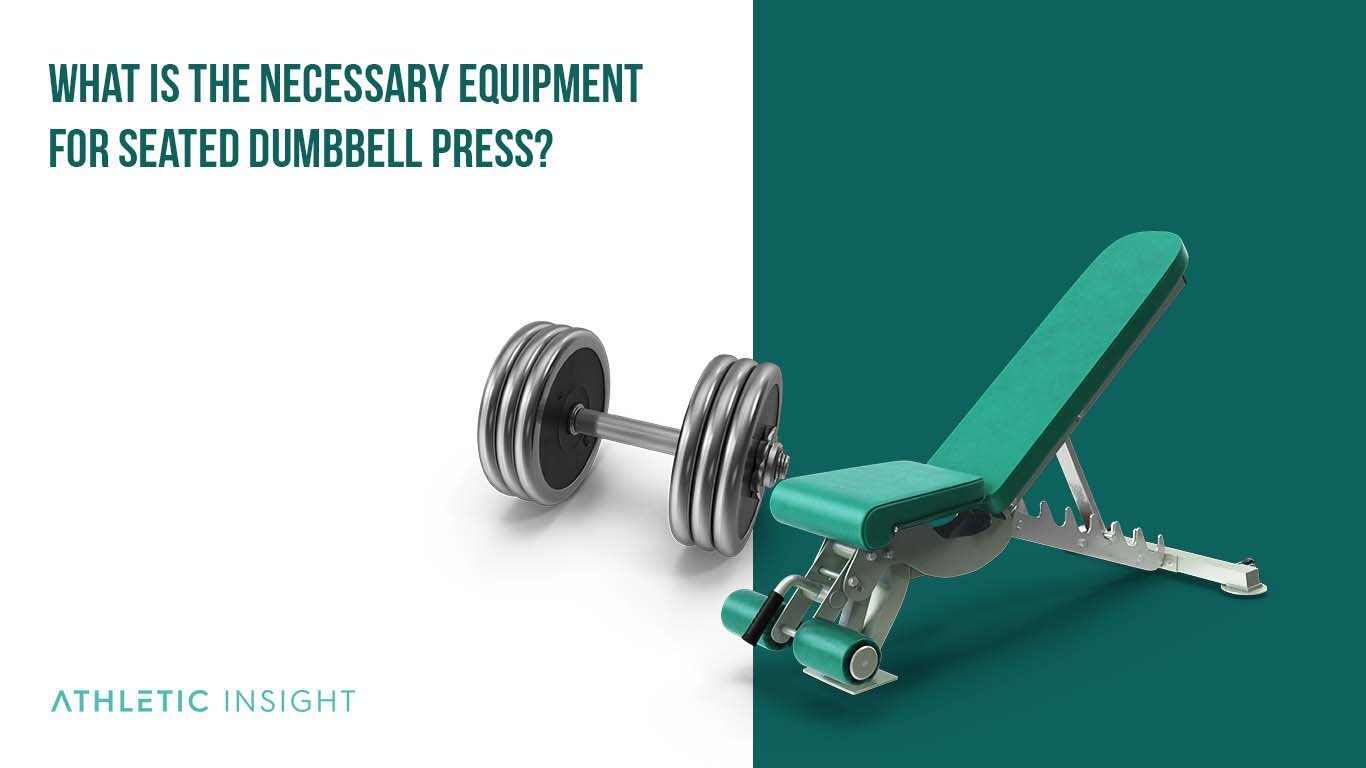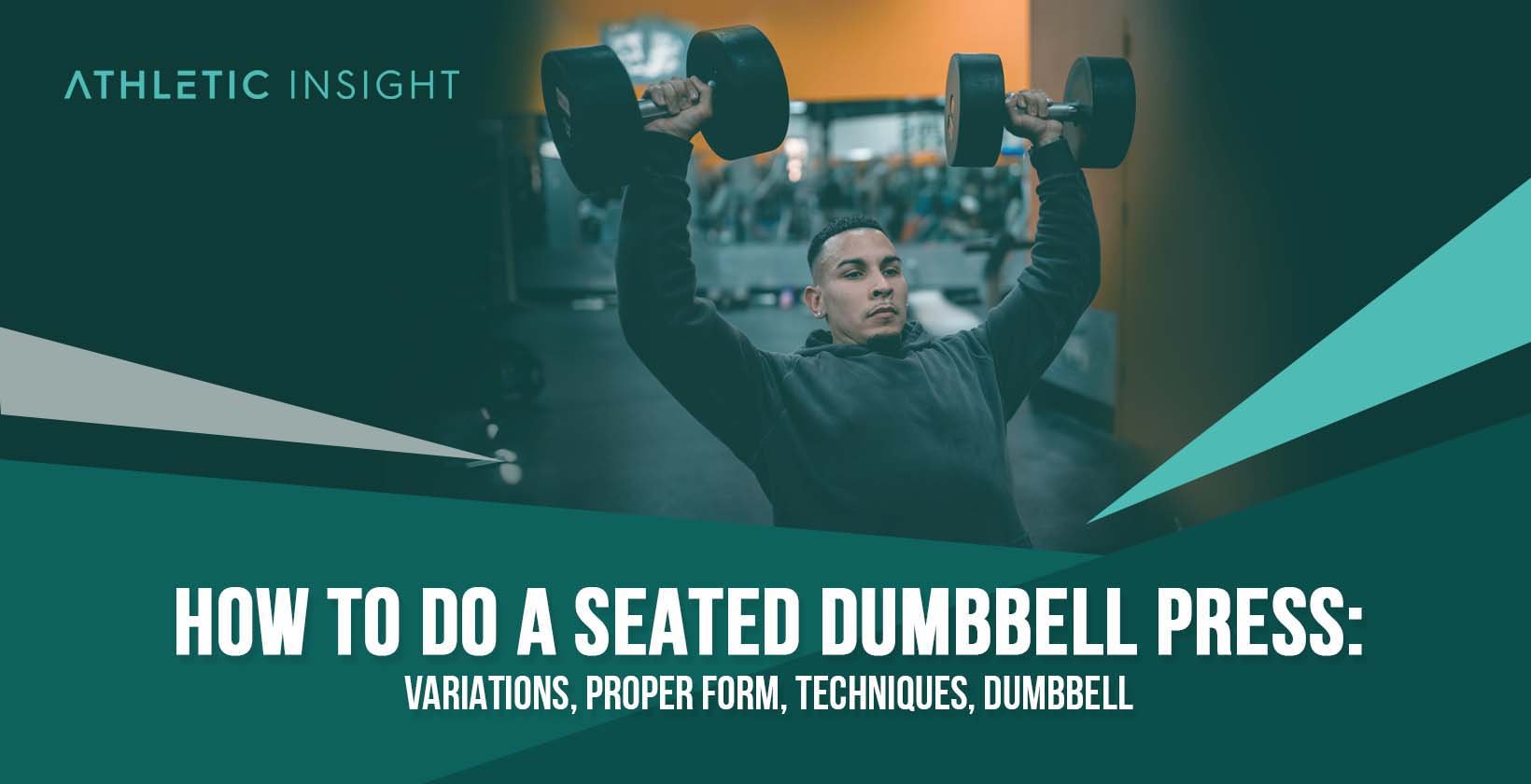A seated dumbbell press is a compound weightlifting exercise that targets the shoulder muscles and is also a variation of the military dumbbell press. The benefits of sitting while doing this exercise are a greater focus on the chest and shoulder muscles and an emphasis on overall form.
Like all exercises, it is important to master the form before adding too much weight as it’ll lead to common injuries in the shoulders, wrists, triceps, and back. Throughout the lift, your shoulders and shoulder blades should be retracted backward as opposed to rolled forward. This will ensure that the weight is properly distributed and help to maximize efforts.
The seated dumbbell press is beneficial for all athletes, from Strongmen, bodybuilders, and Olympic weightlifters, to professional athletes across the board. Shoulder strength impacts many sports and activities which is why the seated dumbbell press is so popular.
How to Perform Seated Dumbbell Press with Proper Form?
Proper form is vital for seated dumbbell presses. Without it, you could get injured and not be able to lift for a while. Following the steps will help this shoulder exercise become muscle memory. Here are the steps to dominate seated dumbbell press repetitions.
- Set up a 90-degree adjustable angle bench.
- Choose a weight from the rack.
- Use a neutral grip.
- Pick up the dumbbells from the floor (palms facing in).
- Sit on the bench with the end of the dumbbells on your knees.
- Kick your knees up one at a time in a safe.
- Control the action to secure each dumbbell.
- Position the dumbbells.
- Rotate your hands so they’re facing front.
- Take a deep breath before extending the elbows.
- Tighten the deltoids to press the weights above.
- Down slowly until your arms are extended again.
- Repeat for the desired number of repetitions.
What Sre the Benefits of a Seated Dumbbell Press?
One of the benefits of a seated dumbbell press is gaining more muscle mass. Repeating this exercise can also increase agility and joint health and prevent muscles from forming asymmetrically. Here are a few of the benefits of the seated dumbbell press.

- Increased Muscle Mass
- Joint and Movement Integrity
- Address Movement and Muscular Asymmetries
Each of these benefits is great for an athlete. Whether you are focusing on the upper body or trying to become stronger in general, the seated dumbbell press will help you on all levels of exercise.
What are the mistakes for Seated Dumbbell Press form?
Good seated dumbbell press form will result in increased muscle and strength. However, seated dumbbell press mistakes in the form can lead to muscle fatigue, straining, and pulling. Injuries can occur with improper seated dumbbell press form.
The most common mistakes are starting with too heavy dumbbells or too many repetitions. In the beginning, start small and work up from there. Then you’ll be able to add on weight healthily, without injuring yourself.
Also, ensure that you are following the correct form. Don’t strain your back too much when sitting–focus on using your arms and shoulders to press the dumbbells up and let them back down.
How to Determine Proper Weight for Seated Dumbbell Press?
The proper weight for a seated dumbbell press depends on the person performing the exercise. A beginner should start with 10-15 pound weights and gradually increase from there as they get comfortable.

By the time someone is proficient in the seated dumbbell press, they will know their limits and how much weight they can handle. The goal isn’t always more–it’s more with proper form and muscle growth. Too much weight at once could cause injuries.
Which muscles are involved while performing Seated Dumbbell Press?
The muscles involved in a seated dumbbell press are as follows.
- Triceps
- Anterior delts
- Lateral delts
- Serratus anterior
- Upper trapezius
- Abdominal muscles
These muscle groups are in the shoulders, chest, and back areas. They are each strengthened by the weight and resistance of the workout itself. The seated dumbbell press pushes the weights up and puts a healthy strain on the muscles.
Because of the seated posture, this dumbbell press can also work the abdominal muscles. If done correctly, it is an excellent workout for all of these areas. The seated dumbbell press is primarily used to strengthen the shoulders and chest muscles.
What are the Seated Dumbbell Press variations?
Of course, there are many variations to the seated dumbbell press. Here are some of the most common variations and the reason they are used. Each variation focuses on different muscle groups or techniques.
- Standing Dumbbell Shoulder Press – done while standing
- Seated Dumbbell Shoulder Press – the dumbbells are pushed straight up instead of out and up
- Dumbbell Arnold Shoulder Press – the Arnold press is a variation of press that uses a different pressing technique than a shoulder or a dumbbell press
- Dumbbell Neutral Grip Shoulder Press – a variation in which the athlete has a neutral grip instead of an overhand grip on the dumbbells
- Dumbbell Shoulder Partial Press – an incomplete dumbbell shoulder press, usually used by beginners or athletes with injuries
What is the Necessary Equipment for Seated Dumbbell Press?
The only equipment necessary for a seated dumbbell press is a set of dumbbells and an incline bench. If you do not have an incline bench, you can use a regular chair or bench in your house. As long as you have a set of dumbbells in the correct weight category, you can perform a seated dumbbell press.

Does Seated Dumbbell Press affect the hormones?
Any physical activity affects the hormones in your body. Studies show that increased levels of exercise and physical fitness can increase dopamine, the happiness hormone. Your brain will naturally start to produce more dopamine after a while, and you will be happier and less anxious.
However, dopamine does not help build muscles. The hormones that is released to build muscles is testosterone. To get the most testosterone out of a workout, you can take a specially formulated protein shake before the workout. That way, the muscles will retain the memory of the workout longer and form more quickly.
Stretching after a workout is also vital. It is not because of hormones but because of the lactic acid in your body. If you don’t stretch, the lactic acid will not be released and will cause cramping. Stretching before and after will prevent injuries and help build muscle.
Does Seated Dumbbell Press Increase Testosterone?
Testosterone is primarily known as the male sex hormone, which accounts for men’s larger size and more easily built muscles. However, testosterone is present in all genders and can help muscle build quickly, grow hair, and increase energy during workouts.
Like many workouts, the seated dumbbell press increases testosterone production when executed properly. Any exercise increases testosterone, and the seated dumbbell press is no exception.
When you exercise, testosterone increases, although only temporarily. To truly increase testosterone while exercising, you need to accompany it with a solid diet and pre-and post-workout energy shakes. These will help to increase the amount of testosterone your body releases while exercising and build muscle faster.
Is Seated Dumbbell Press a Military Movement?
The seated dumbbell press is a military movement, although it is more common for military exercises to include the standing dumbbell press. Both dumbbell presses are excellent workouts for gaining strength and muscle.
The standing dumbbell press works out the glutes, core, and back muscles in addition to the shoulders and chest. While it is a more strenuous workout, a less experienced athlete might not get the most out of it without mastering the seated dumbbell press.
Is Seated Dumbbell Press dangerous?
The only time a seated dumbbell press is dangerous is if done incorrectly. Completing any exercise with improper form can be harmful, but it’s especially dangerous if weights are involved.
To prevent unnecessary injuries, always perform the seated dumbbell press (or any exercise with weights) with proper form. This way, you will avoid straining, overextending, or pulling muscles when you exercise.
Is A Seated Dumbbell Press push or pull?
The seated dumbbell press is a pushing workout. When doing reps of dumbbell presses, you use the same muscles you would when pushing against an object. It focuses on the chest, triceps, and shoulders. These muscles are stronger after a pushing exercise.
Is Seated Dumbbell Press essential?
The seated dumbbell press is an essential exercise, but there are many other variations available. The dumbbell press, seated or not seated, is an excellent way to bulk up shoulders, back, and chest muscles.
Is Seated Dumbbell Press a compound exercise?
Yes, the seated dumbbell press is a compound exercise. A compound exercise works multiple sets of muscles, and the seated dumbbell press works the shoulder, back, and chest muscles simultaneously.



